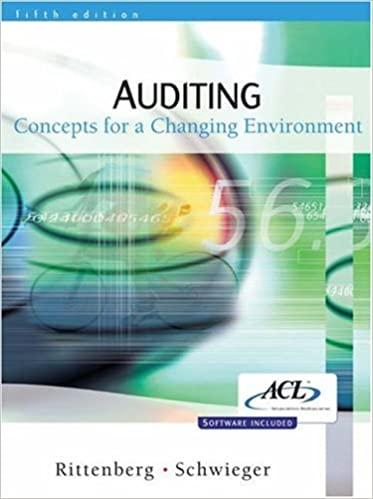Question
Book the entries necessary for the corresponding transactions that have occurred. August 1: The business owner loaned the company $10,000 at 4% interest annually to
Book the entries necessary for the corresponding transactions that have occurred.
August 1: The business owner loaned the company $10,000 at 4% interest annually to be paid in full in three years.
August 15: A new one-year lease agreement was signed for a new sporting goods store. The rent is $1,350 per month for the year. The lease begins on September 1 and is effective through August 31 of the next year. A payment of the first month's rent plus a deposit payment of $2,000 was made. (Info only. The deposit remains in Prepaid Rent until the end of the lease)
August 31: Paid $2,400 for a 12-month insurance policy. Policy effective dates are September 1 through August 31.
September 1: Expense September rent paid in August.
September 21: A part-time worker was hired at $15 per hour to work the customer service desk. One pay period is the 1st of the month through the 15th, and the other is the 16th through the end of the month. Paydays are the 20th for the first pay period and the 5th of the following month for the second pay period. (No entry required on this datefor informational purposes only.)
September 30: Sold 15 bicycles on special at $150 each and 5 golf club sets at $350 each. The customer put 12% on account and paid cash for the rest.
September 30: Calculate the payroll accrual for employees first paycheck for 12 hours to be delivered on October 5.
October 1: Paid October rent on new sporting goods space.
October 5: Paid employee for period ending September 30.
October 15: Collected $500 on account from customers.
October 20: Paid employee with 20 hours for period ending October 15.
October 31: Accrued wages earned for employee with 15 hours for period of October 16 through October 31.
October 31: Sold 5 bicycles at $170 each and 15 golf club sets at $380 each in October with 31% on account.
November 1: Paid rent on new sporting goods space.
November 5: Paid employee for period ending October 31.
November 17: Collected $950 on account from customers.
November 20: Paid employee with 17 hours for period ending November 15.
November 30: Accrued wages earned for employee with 22 hours for period November 16 through November 30.
November 30: Sold 15 bicycles at $170 each and 10 golf club sets at $380 each in November with 28% on account.
December 1: Paid rent on new sporting goods space.
December 5: Paid employee for period ending November 30.
December 18: Received payments from customers toward accounts receivable in amount of $1,000.
December 20: Paid employee with 16 hours for period ending December 15.
December 31: Accrued wages earned for employee with 18 hours for period of December 16 through December 31.
December 31: Sold 20 bicycles at $180 each and 5 golf club sets at $400 each in December with 22% on account.
December 31: Book expense for insurance during September 1December 31. December 31: Accrue for interest from August 1 to December 31 on the loan.
2. As this is a new store, merchandise has been purchased on account to sell at the store. The information below relates to the purchase and sales of the new products. Use the perpetual inventory method with the FIFO valuation method.
August 25: Purchased 15 golf club sets for $240 each to sell at the store from vendor A, on account with terms of 1/10 net 60.
September 16: Purchased 25 bicycles for $75 each to sell at the store from vendor B, on account with terms of 1/10 net 60.
September 24: Paid $750 toward merchandise from vendor A.
September 30: Recorded impact of sales transaction on COGS and the inventory asset.
October 18: Paid $650 toward merchandise from vendor B.
October 25: Paid remaining payable for merchandise from vendor A.
October 26: Purchased 25 more golf club sets for $250 each to sell at the store from vendor A, on account with terms of 1/10 net 60.
October 31: Recorded impact of sales transaction on COGS and the inventory asset.
November 10: Paid remaining payable for merchandise from vendor B.
November 16: Purchased 35 more bicycle sets for $85 to sell at the store each from vendor on account with terms of 2/10 net 30.
November 20: Paid vendor B in full and took advantage of the discount (offset COGS).
November 30: Recorded impact of sales transaction on COGS and the inventory asset.
December 10: Paid $4500 toward payable for merchandise from Vendor A.
December 31: Recorded impact of sales transaction on COGS and the inventory asset.c
Step by Step Solution
There are 3 Steps involved in it
Step: 1

Get Instant Access to Expert-Tailored Solutions
See step-by-step solutions with expert insights and AI powered tools for academic success
Step: 2

Step: 3

Ace Your Homework with AI
Get the answers you need in no time with our AI-driven, step-by-step assistance
Get Started


